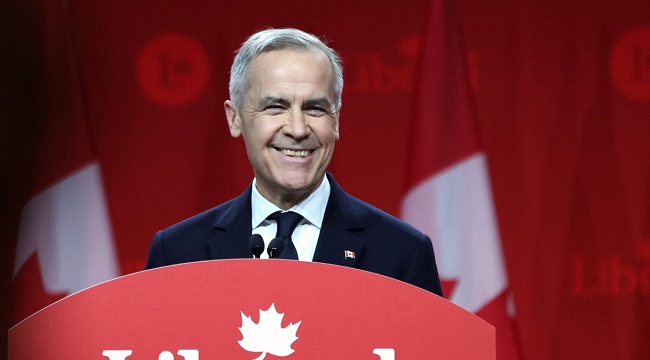Mark Joseph Carney has never been a conventional politician. Once hailed as one of the most influential central bankers of his generation, Carney now leads Canada as its 24th Prime Minister, following a dramatic federal election that reshaped the country’s political landscape.
His decisive electoral victory marks a rare transition from global finance to high political office — a journey that underscores not just his personal adaptability, but also the shifting mood of a Canadian electorate seeking experienced, steady leadership in a turbulent world.
From Fort Smith to 24 Sussex
Born on March 16, 1965, in the remote town of Fort Smith, Northwest Territories, Mark Carney’s rise to national prominence has been shaped by intellect, discipline, and a career defined by global exposure. Educated at Harvard University, where he earned a bachelor’s degree in economics, he later went on to Oxford University, obtaining a master’s and a doctorate in the same field.
Carney’s professional journey began at Goldman Sachs, where he spent over a decade working across London, Tokyo, New York, and Toronto. But it was his move into public service in the early 2000s that began to shape the legacy we now associate with him.
Economic Stewardship in Times of Crisis
Carney joined the Bank of Canada in 2003, first as Deputy Governor and later as the bank’s head in 2008 — just as the global financial crisis unfolded. He was praised widely for guiding Canada through the economic downturn with policies that were decisive, transparent, and innovative. Under his leadership, Canada was one of the few advanced economies to avoid a banking collapse.
His performance did not go unnoticed. In 2013, he became the first non-Briton to lead the Bank of England. His tenure was marked by careful management during Brexit uncertainty and his early leadership on climate finance — well before it became a mainstream global priority.
By 2019, Carney had taken on a new challenge as the United Nations Special Envoy for Climate Action and Finance, reinforcing his image as a global thinker with a conscience rooted in sustainable development.
A Nation Turns to a New Kind of Leader
Despite years of speculation about a political career, Carney only entered the fray in 2024 when he was appointed to lead the Liberal Party’s economic task force. His transition from boardrooms to campaign rallies was sealed in early 2025 when he won the Liberal leadership with overwhelming support.
Following the resignation of former Prime Minister Justin Trudeau, Carney stepped into the spotlight during a period of mounting tension with the United States and rising populism at home. The federal election that brought him to power saw the Liberal Party reclaim ground lost in previous cycles, forming a strong minority government with 169 seats — just one seat short of a majority.
The victory was widely seen as a response to growing concerns over U.S. President Donald Trump’s trade posturing and controversial remarks about Canada, which stirred a wave of patriotic sentiment across the country.
Policy Priorities and Vision for Canada
In his first address as Prime Minister, Carney made clear that his government would prioritize economic resilience, middle-class tax relief, affordable housing, and energy independence. Central to his vision is the idea of reducing Canada’s economic reliance on the United States by deepening trade ties with Europe and Asia.
He also reaffirmed his commitment to climate-conscious growth, a hallmark of his past work, and called for a national strategy on green energy investments that would not only address environmental concerns but also spur economic growth in emerging sectors.
On the foreign policy front, Carney’s early diplomacy has emphasized stability and collaboration. His first call as Prime Minister was with President Trump — a respectful exchange that laid the groundwork for an anticipated face-to-face meeting at the upcoming G7 summit in Alberta.
Challenges on the Horizon
Despite his victory and a clear mandate for change, Carney faces no shortage of challenges. The political landscape remains fractured, with a surge in support for far-right populism, especially in parts of Western Canada. Conservative opposition leader Pierre Poilievre, though defeated, retains a vocal base and has positioned himself as a fierce critic of Carney’s globalist background.
At the provincial level, tensions over healthcare spending, climate policy, and Indigenous relations will also test the federal government’s capacity to deliver on its promises.
Still, Carney’s unique blend of economic expertise, international experience, and measured pragmatism has struck a chord with Canadians. In a world increasingly defined by volatility and division, his arrival marks a return to technocratic leadership — one grounded in evidence, tempered by diplomacy, and shaped by a deep understanding of the global stage.
As Mark Carney begins his tenure, Canada embarks on a new chapter led not by a traditional politician, but by a leader forged in the crucible of global crises — one who believes, deeply, that principled leadership and sound policy can still chart a better course.


